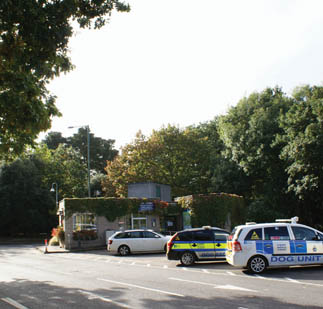A new accreditation scheme launched by the University of Salford aims to make it easier for prospective students – and their parents – to identify safe universities in the UK. ProtectED is an accreditation scheme assessing the work done by universities to ensure their students’ safety, security and well-being.
A uni works towards accreditation by providing details about the services and structures they provide to enable students to avoid problems. The idea is that HEIs’ (higher education institutions’) role in student safety, security and well-being does not end at campus boundaries but takes in the wider student ‘experience’.
Prof Helen Marshall, Vice-Chancellor of the University of Salford, said: “An issue which the higher education sector has grappled with for years is that institutions have varied and different ways of considering the safety and well-being of their students, without a higher education specific code of practice and benchmark for policies and best practice. These are huge issues to students and parents, but up until now there has been no standard way of benchmarking and assessing how effectively universities manage the issue. I really welcome this work developed by our dedicated and internationally-recognised security and community relations team at Salford.”
Through the accreditation, ProtectED will gain insight into ‘what works’. This will be anonymised, aggregated and analysed, and findings shared with members. ProtectED accreditation focuses on five areas: Core Institutional Safety and Security – covering campus security measures; Well-being and Mental Health; International Students; Harassment and Sexual Assault; and the Student Night Out.
The UK’s 162 HEIs have some 2.3 million university students. Office of National Statistics figures show full-time students are more at risk than the general population of being victims of crime, while an NUS (National Union of Students) survey of more than 1,000 students found 78 per cent had experienced mental health issues during the previous year.
For example, ProtectED universities will deliver training and awareness-raising initiatives to highlight the support available to students, and to aid conversation around sensitive subjects such as mental health and sexual assault. Organisers point to research that international students are particularly concerned about safety in their choice of where to study overseas.
Helen Clews, External Relations Adviser for the British Council and member of the ProtectED Advisory Board, said: “Personal safety in the UK for students, their dependents, visitors and workers coming to the UK is a duty of care the British Council takes very seriously and we work with partners such as ProtectED to help international students take care of themselves and settle happily into their community.”
Student retention also matters to unis. According to the Higher Education Statistics Agency, 26,000 UK students failed to complete their first year in 2010/11. Hence ProtectED is based around the need for prevention, early intervention and timely support, raising student satisfaction so more students complete their studies.
Mark Sutton, chairman of the Association of University Chief Security Officers (AUCSO), said: “The ProtectED code of practice gives a clear opportunity to benchmark processes and procedures that will allow universities to focus on sector best practice, continuous improvement and the student experience. It will raise standards throughout HE and therefore I fully support this excellent initiative.”
Ben Lewis, chairman of the Association of Managers of Student Services in Higher Education (AMOSSHE), said: “ProtectED gives real potential for institutions to think more strategically about how they structure their security and support services, how they work with one another and how they can improve all aspects of the student experience. AMOSSHE is fully supportive of the work being led by ProtectED and the team at Salford University.”
More details
Institutions wanting to join must sign up to the five key ProtectED Principles, committing to adopting within their policies, structures, processes and culture. To gain accreditation, applicant institutions must self-assess their own policies, processes and practice against the ProtectED Code of Practice. This is followed by peer review and a verification visit by a ProtectED approved assessor and student assessors.
Membership is open from Monday, February 6, 2017, with the first group of ProtectED Accredited Institution award holders expected to be certified in early 2018. Visit www.Protect-ED.org.
Picture by Mark Rowe; guardhouse at entrance to University of East Anglia, Norwich, autumn.









